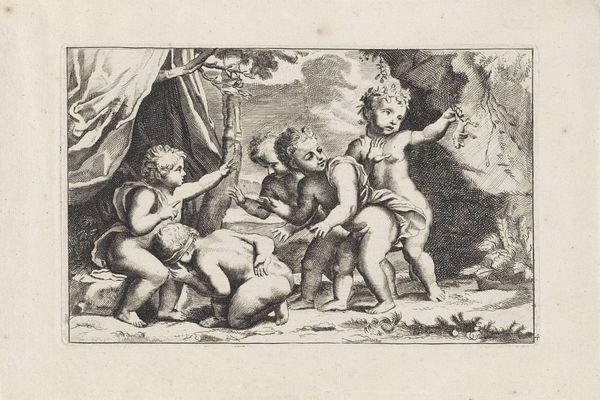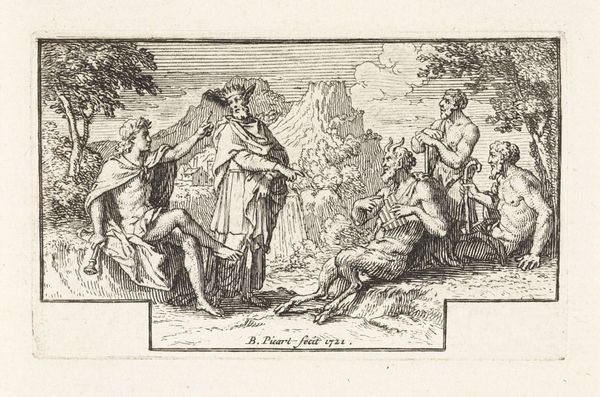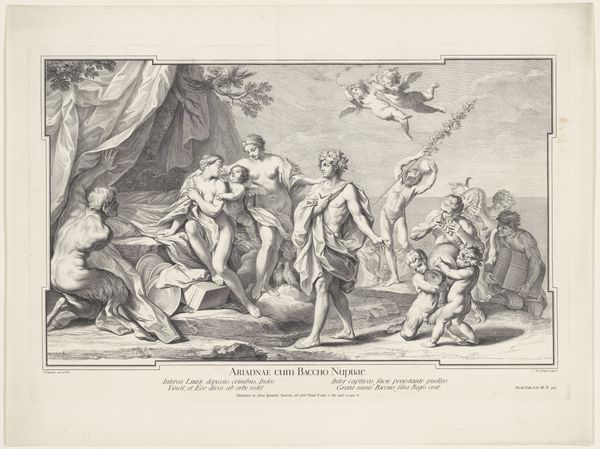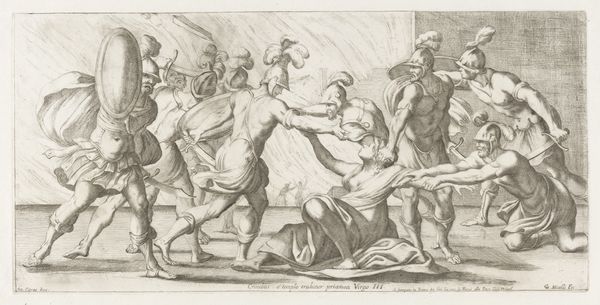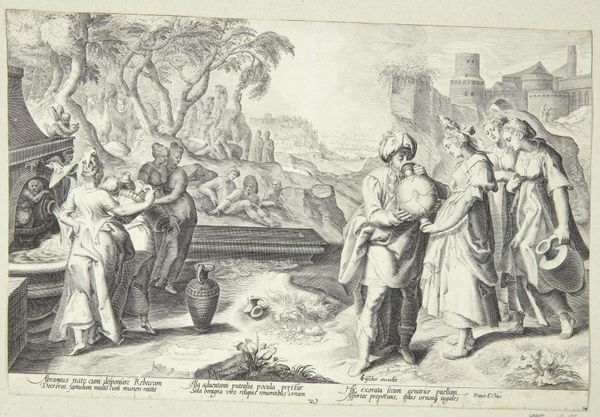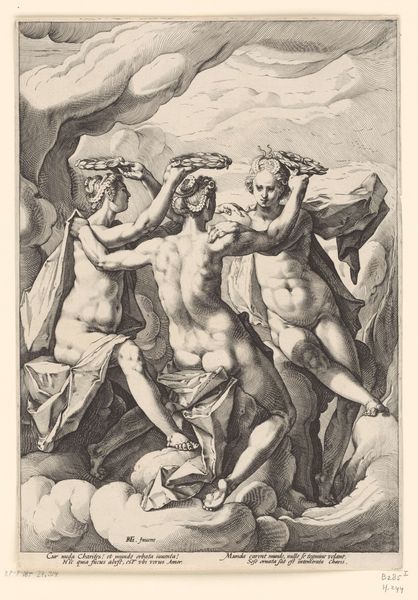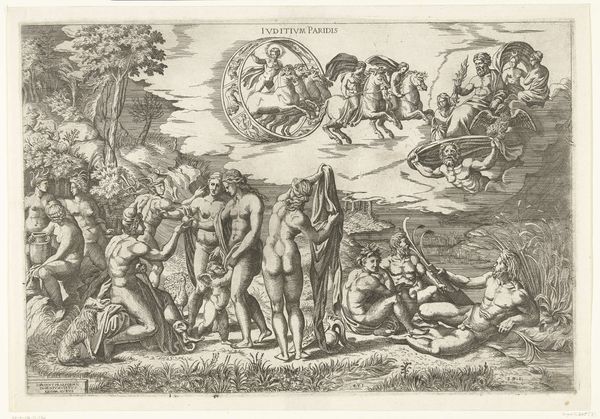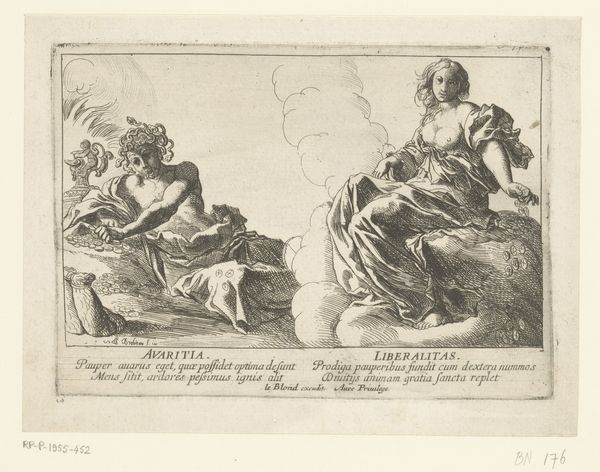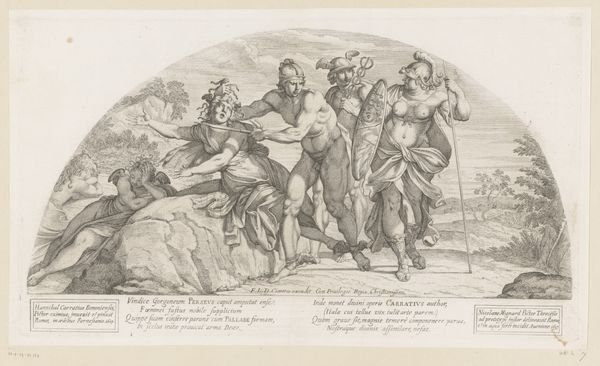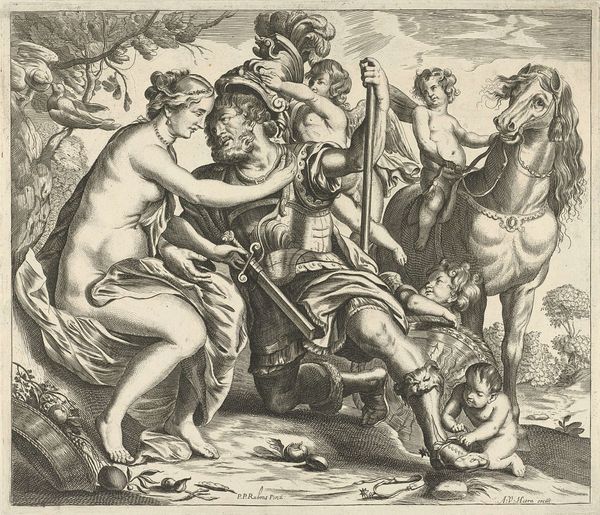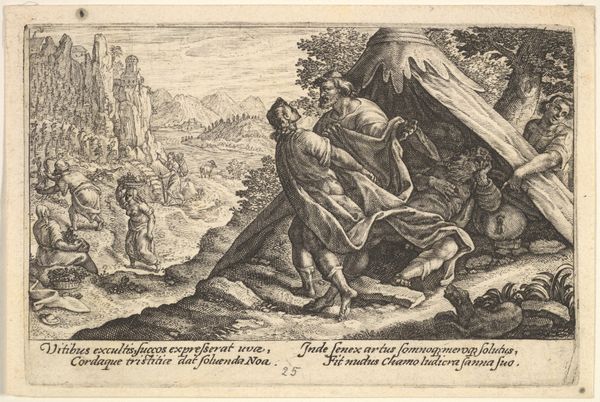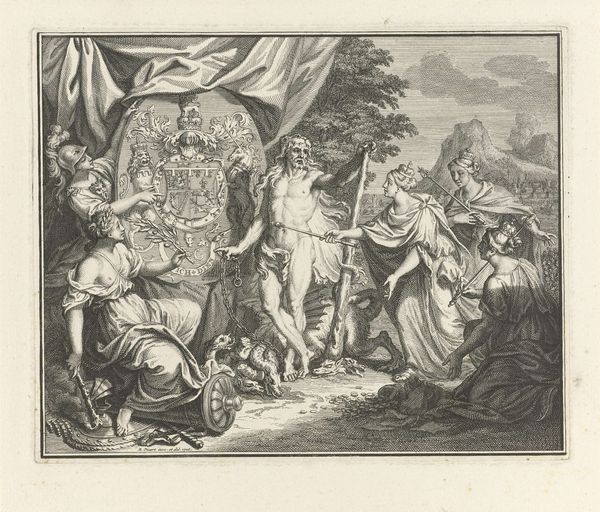
engraving
#
allegory
#
baroque
#
figuration
#
history-painting
#
nude
#
engraving
Dimensions: height 167 mm, width 240 mm
Copyright: Rijks Museum: Open Domain
This print, “Perseus Beheading Medusa,” was made by an anonymous artist using the intaglio process. The image begins as a drawing, which is then incised into a metal plate. The plate is inked and then pressed against paper, transferring the image. The real skill comes in the control of the burin, the tool used to cut the lines. Notice how the varying depths and thicknesses create a sense of light and shadow, volume and texture. This is a demanding, meticulous form of labor. Its final result is a crisp, repeatable image. Prints like this one were relatively inexpensive, and helped to circulate classical stories widely. The labor of the engraver, therefore, underwrote the cultural authority of myth. The sharp lines of the print gives a sense of clarity to the narrative – and perhaps even a sense of mastery over the horrific Medusa herself. By appreciating the material and the process, we recognize the artist's skill and also the social role that this image played. It's not just about the myth, but about the means of its dissemination.
Comments
No comments
Be the first to comment and join the conversation on the ultimate creative platform.

